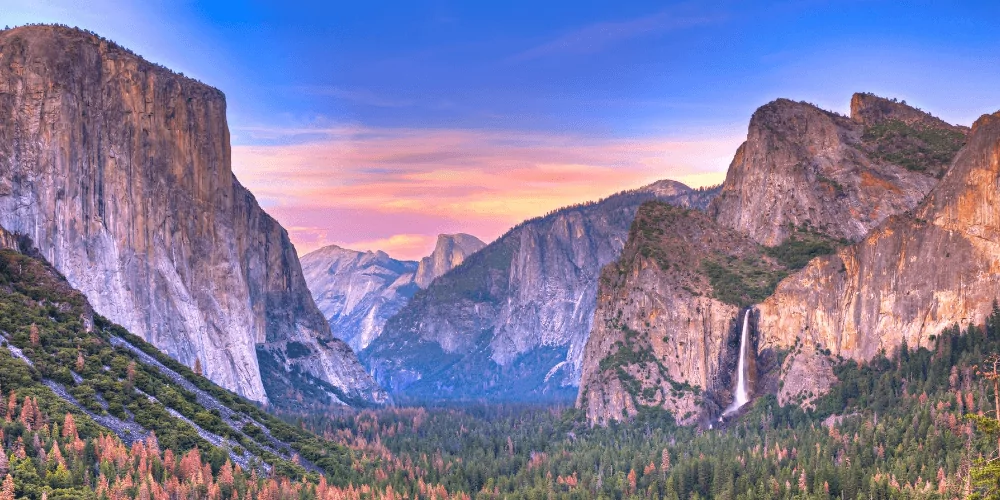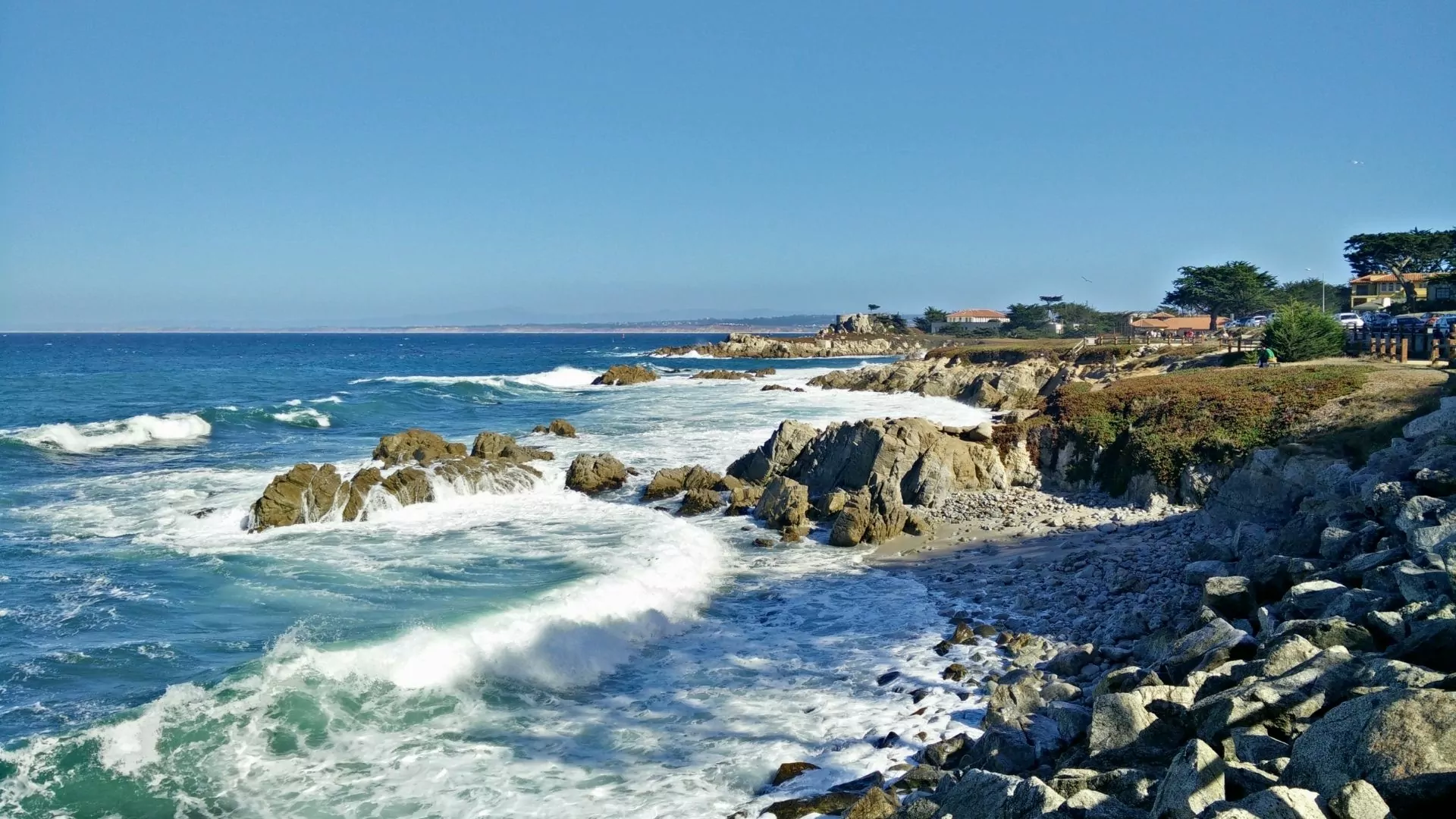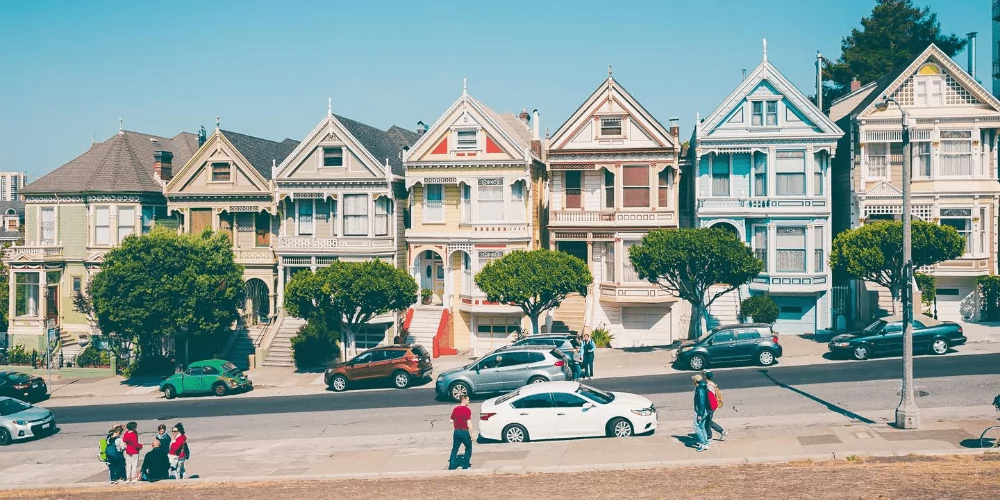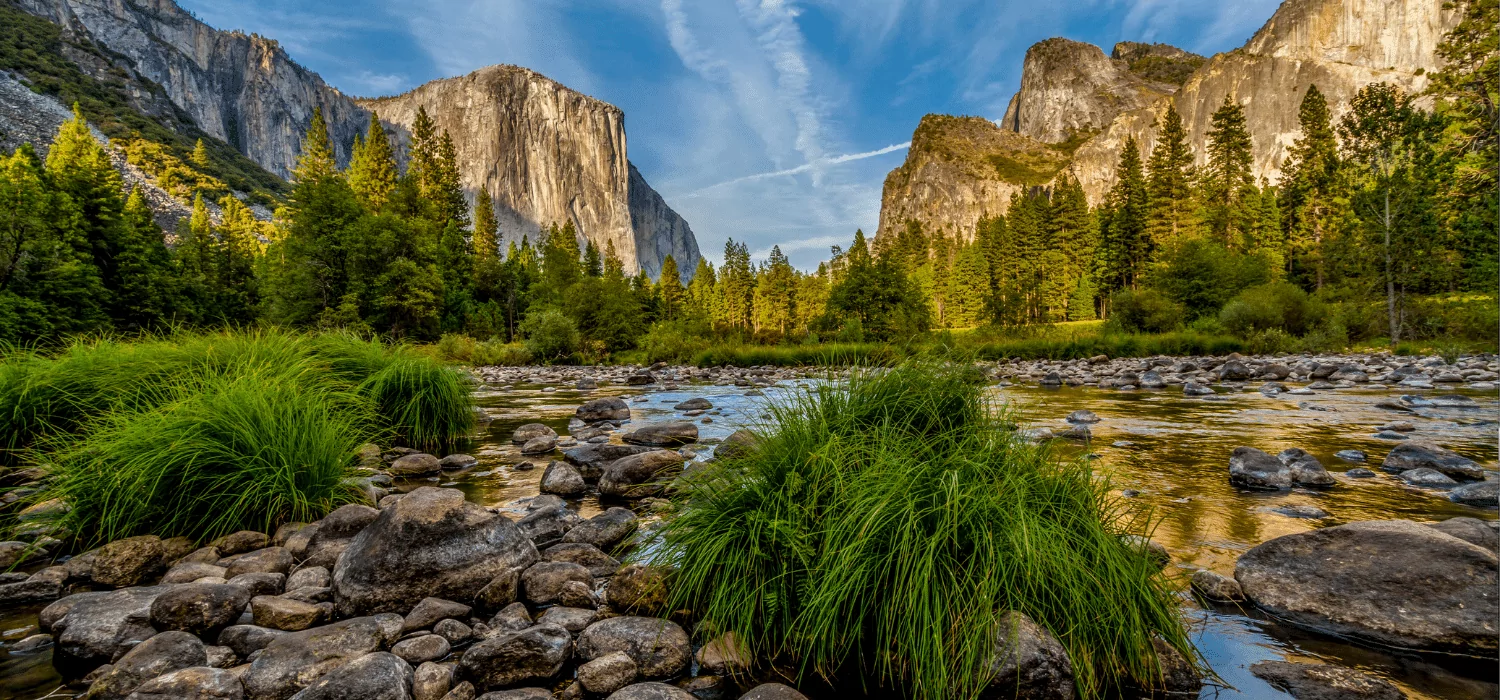“Yosemite’s natural beauty cleans and warms like a fire. None can escape its charms. “― John Muir
The list of things to do in Yosemite National Park is endless, so planning your visit is crucial to avoiding the crowds and navigating this expansive national park. From the incredible viewpoints overlooking Yosemite Valley — such as Glacier Point, Olmstead Point, and Tunnel View — to the world’s fifth-highest waterfall, Yosemite Falls, Yosemite offers the perfect mix of accessibility and adventure.
Whether you plan to drive over Tioga Pass by car, or check one of Yosemite’s iconic hikes off your bucket list, it’s never too early to start researching the best places to visit and things to do in Yosemite National Park. This post provides a comprehensive guide to all of Yosemite’s activities and attractions, allowing you to plan the perfect tour for yourself and your travel companions.
To help with your Yosemite tour planning we will cover here:
- What are the most popular things to do in Yosemite National Park?
- What are some off-the-beaten track attractions in Yosemite?
- How long should I plan to spend in Yosemite and what are some suggested itineraries?
- What is the best time to visit Yosemite National Park?
- How do you get a reservation to enter Yosemite
- What is the best way to get around Yosemite?
Activity List
- Activity Centers
- Places to See in Yosemite
- Things to Do
Let’s get started!
The 1,189 square mile Yosemite National Park is roughly the size of the U.S. state of Rhode Island. Accessible from 800 miles of hiking trails and 350 miles of roads are thousands of lakes, rivers, granite monuments and natural wonders. To make your trip planning a bit easier, we’ve arranged our Yosemite suggestions into: Activity Centers, Places to See and Things to Do.
Activity Centers in Yosemite
Ahwahnee Hotel
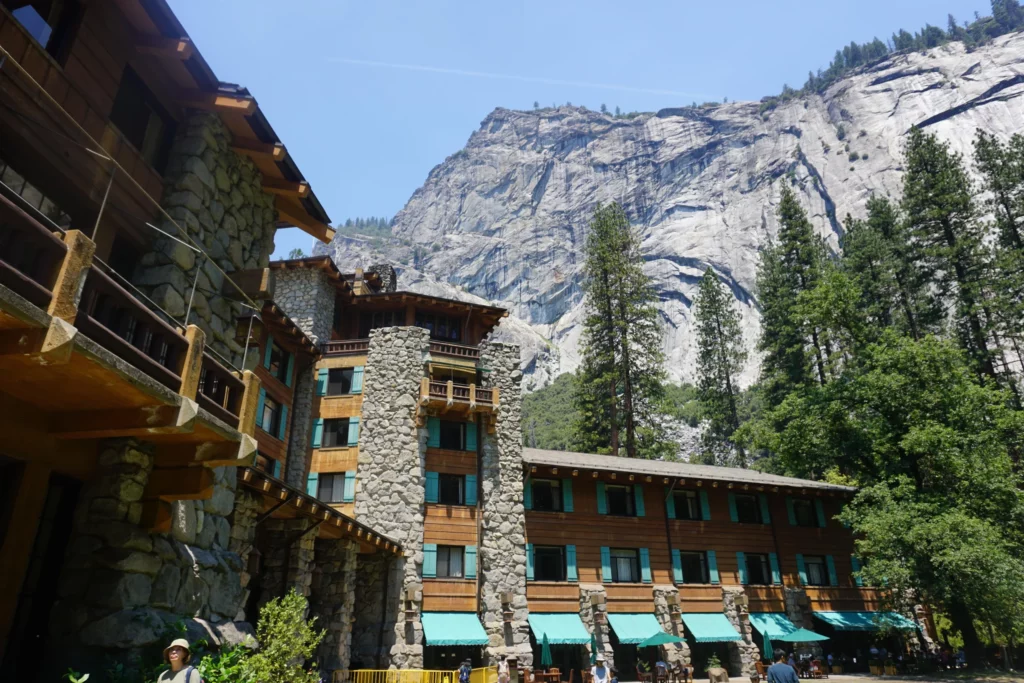
The Ahwahnee Hotel is a shining example of an early 20th-century rustic resort. With its granite facade, stained glass, log-beamed ceilings, and massive stone fireplaces, this National Historic Landmark is an island of luxury in the middle of the wilderness. It’s filled with richly colored Native American art and features a gift shop on-site, showcasing work by local artisans. It also offers a sweet shop, a comfortable bar, and dining options for breakfast, lunch, and dinner. The Ahwahnee is accessible by car or by a 45-minute hike from Yosemite Valley. You can also take the YARTS bus to Stop 3.
Ansel Adams Gallery
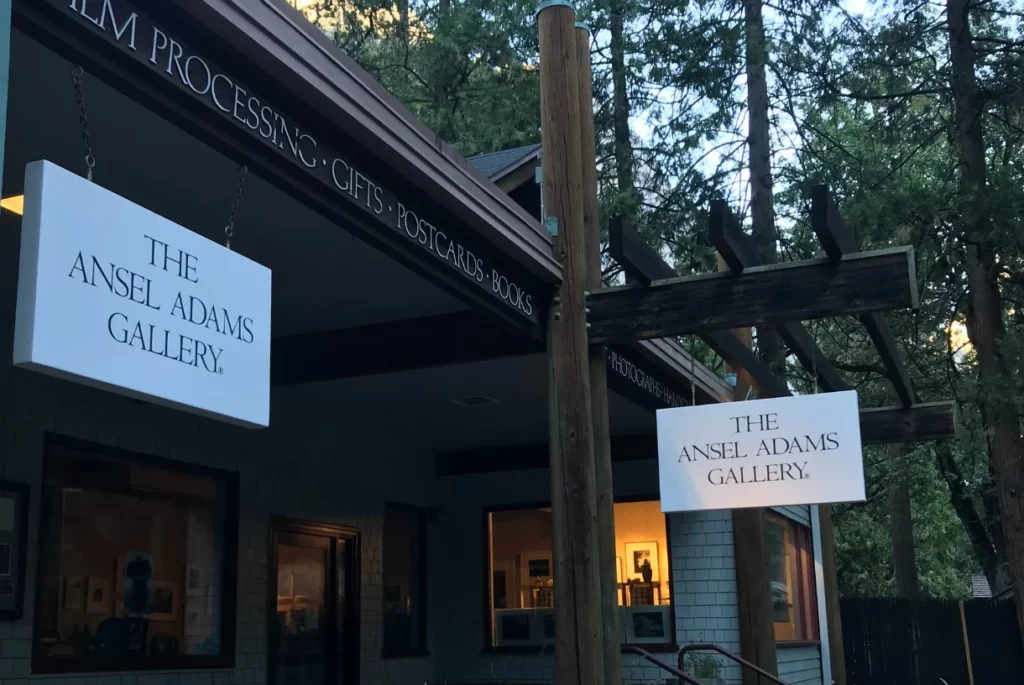
Photographer Ansel Adams is known throughout the world for his spectacular images of America’s natural grandeur. Some of his most famous pictures are black-and-white images of Half Dome and Yosemite Valley, taken in the 1920s and 1930s. His majestic photographs and outspoken views helped shape global opinion about the need to protect our environment. See them for yourself at the Ansel Adams Gallery, located between the Visitor Center and Post Office, and only a 20-minute walk from the Yosemite Valley Lodge.
Badger Pass Ski Area
In winter, Yosemite transforms into a snow-covered paradise, with groomed trails for cross-country skiers, chairlifts for downhill skiers, a terrain park for snowboarders, and a tubing area where the whole family can experience thrills together. When and where can you hit the slopes? The Badger Pass Ski Area is open from mid-December through mid-March, weather conditions permitting. Visit the Badger Pass Ski Area website to check out current snow conditions, rent equipment, find the shuttle schedule, and buy season passes.
Curry (Half Dome) Village
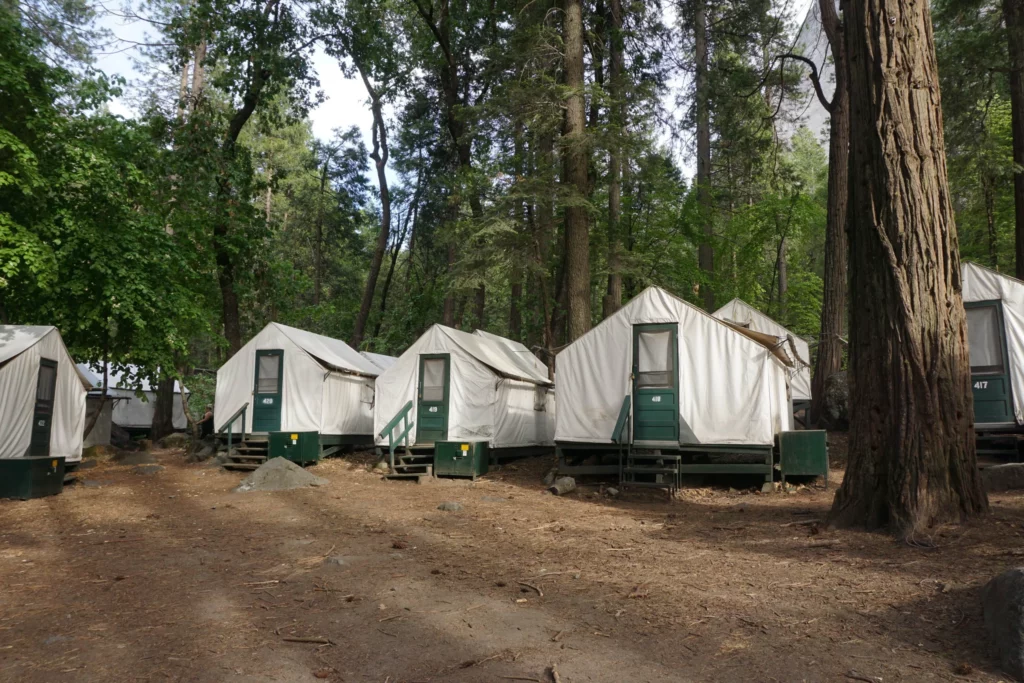
Curry Village (formerly known as Half Dome Village) is located just below Half Dome and Glacier Point, and has been a family-friendly attraction since its establishment in 1899. You’ll find a variety of fun seasonal activities, including an outdoor swimming pool, an ice-skating rink, an entertainment amphitheater, ranger programs, bike rentals, and several restaurants, among other amenities. Curry Village offers a variety of overnight accommodation options, including wood-sided cabins and canvas tent cabins. Lodging at Curry Village is extremely popular, so be sure to make your reservations well in advance of your trip.
Mariposa Grove of Giant Sequoias
Yosemite is famous for its giant sequoias, and Mariposa Grove, an hour by car from Yosemite Valley, is one of the best places to see them. It’s home to over 500 mature giant sequoias, including the Fallen Monarch made famous in an 1899 photograph with U.S. Calvary officers. Other must-see trees are the Bachelor, the Clothespin Tree, and the 2700-year-old Grizzly Giant.
There are a variety of easy-to-moderate trails in Mariposa Grove, and YARTS provides public transportation to the Welcome Plaza. If you’re driving your own vehicle, check the local road conditions in winter since Highway 140 may be closed due to snow.
Yosemite and Giant Sequoias One Day Tour from San Francisco
- 15 Hours
- 224+
The only 1-day Yosemite National Park tour from San Francisco to deliver more than you dreamed of at Half Dome, El Capitan, Yosemite Falls, and on a hike to Giant Sequoias.
Yosemite Overnight Tour from San Francisco with No Accommodation
- 269+
This Yosemite tour from San Francisco lets you make your own overnight stay so you can slow the pace to experience Half Dome, El Capitan, Yosemite Falls, and the Giant Sequoia redwoods.
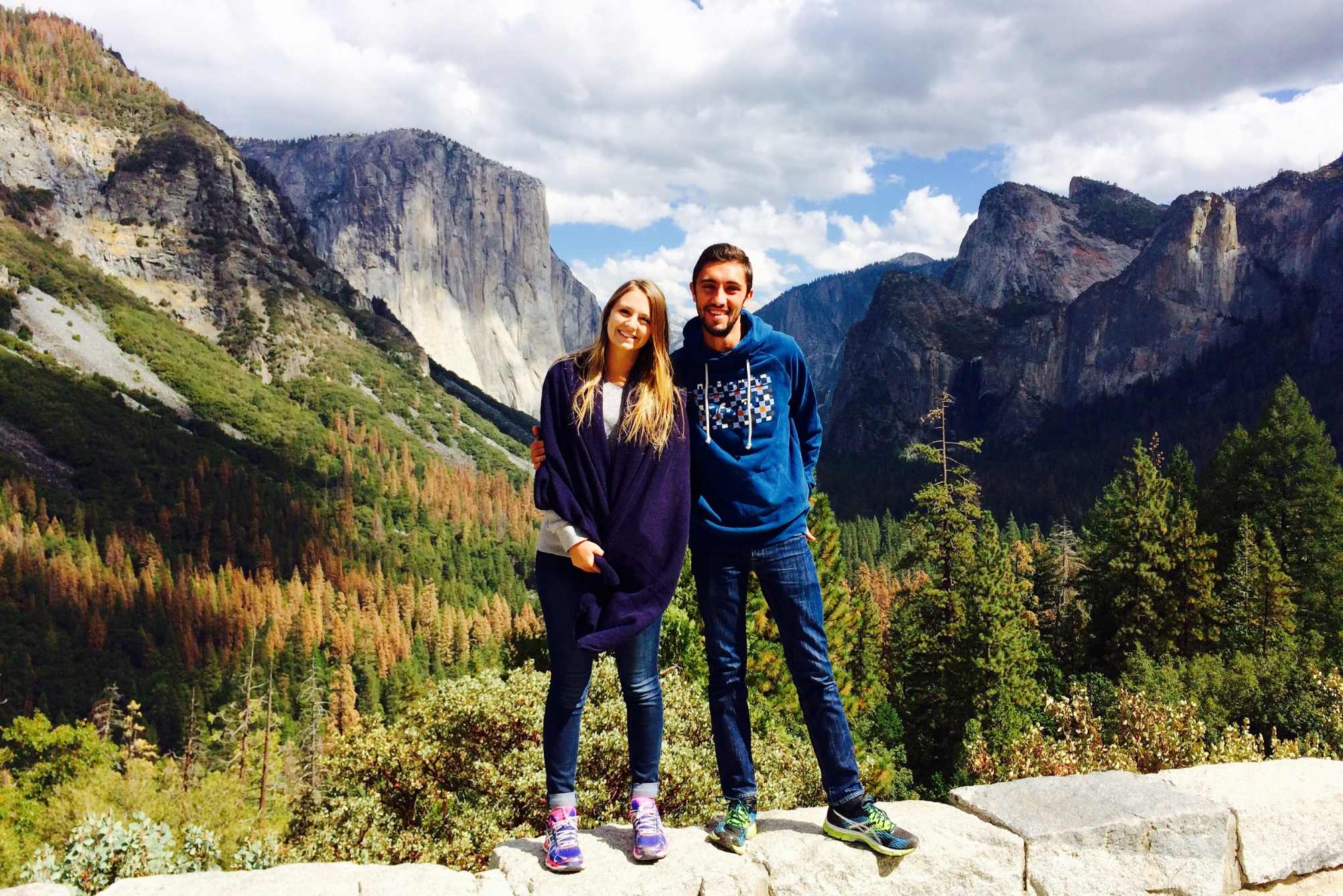
Yosemite and Giant Sequoias One Day Tour from San Francisco
The only 1-day Yosemite National Park tour from San Francisco to deliver more than you dreamed at Half Dome, El Capitan, Yosemite Falls, and on a hike to Giant Sequoias.
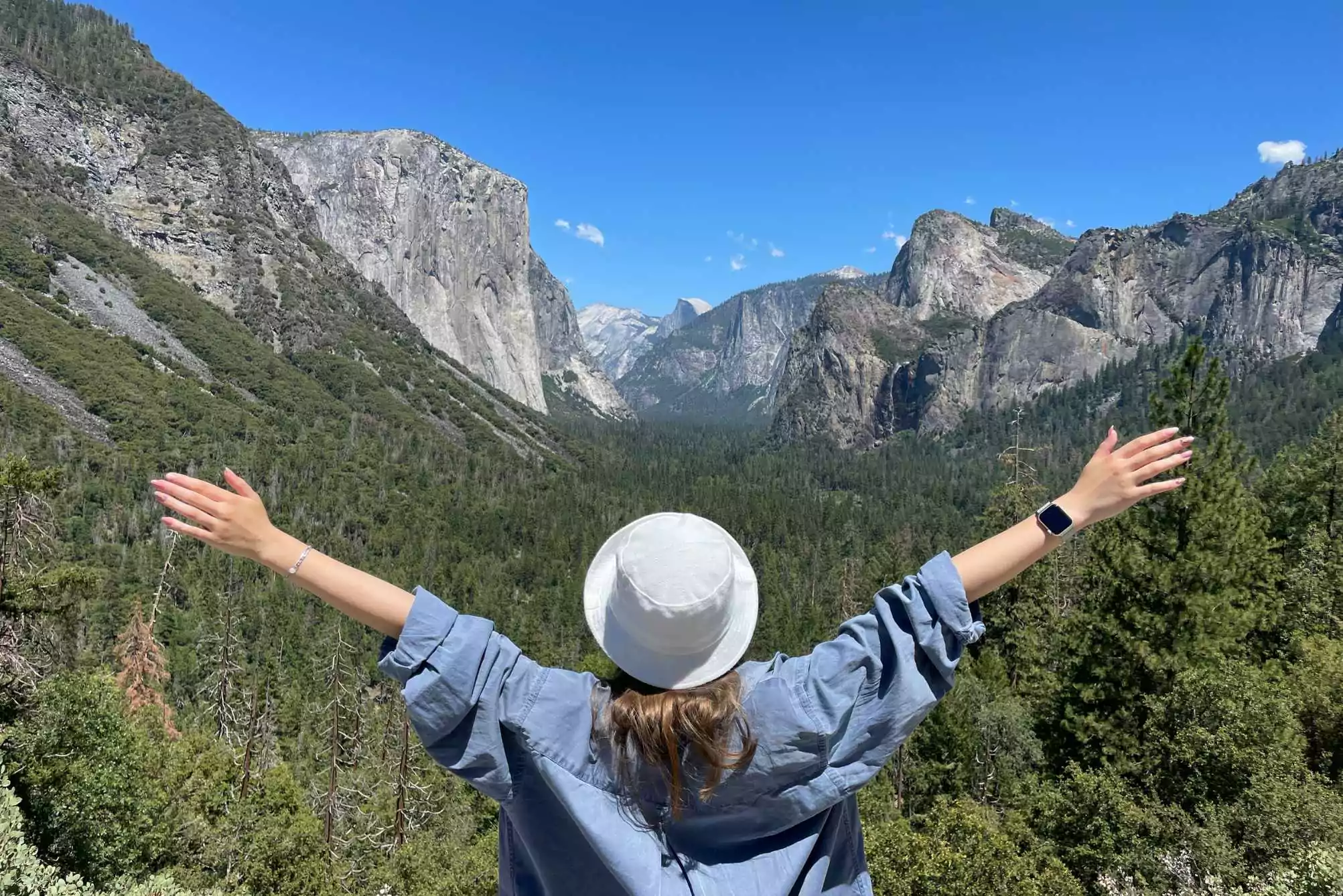
Yosemite 2-Day Tour from San Francisco with No Overnight Accommodation
This Yosemite tour from San Francisco let’s you make your own overnight stay so you can slow the pace to experience Half Dome, El Capitan, Yosemite Falls and the Giant Sequoia redwoods.
Places to See in Yosemite
Bridalveil Fall
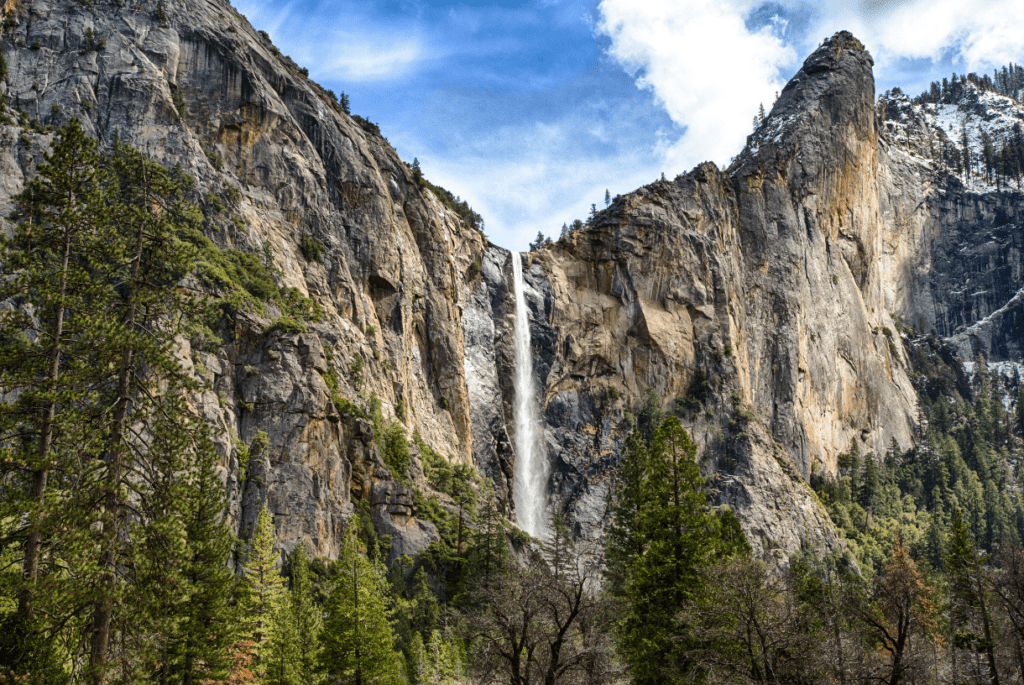
What makes Bridalveil Fall one of Yosemite’s most iconic waterfalls? Well, when it sways in the breeze, it looks like the veil of a 620-foot bride. Bridalveil Fall is often the first waterfall you’ll see on Extranomical Tours’ One-day Total Yosemite Experience. This waterfall is on our list of the top things to do in Yosemite during spring, because that’s when Bridalveil Fall really comes to life; during the rest of the year, it’s less “veil-y,” but still worth a visit!
You can access Bridalveil Fall near the tunnels on Wawona Road and Big Oak Flat Road, as well as the parking lot on the way into Yosemite Valley. You can walk to an overlook just beneath its cascade, but be cautious since the trail is steep and you may get wet.
Best view by: Short hike to the overlook (0.5 mi)
Best tour to visit Bridalveil Fall: Yosemite Day Tour
Cathedral Peak
Cathedral Peak is a granite pinnacle that rises high above the Cathedral Range, an offshoot of the Sierra Nevada. This glacier-carved peak, located near Tuolumne Meadows, is stunning to look at from any angle. It’s also a popular spot for rock climbers: John Muir ascended it himself in 1869.
Best view: Lower Cathedral Lake
Chilnualna Falls
Chilnualna Falls is a real hidden gem in Yosemite! This 2,200-foot waterfall is broken up into five or ten tiers (depending on the season) that wind their way through the rock-carved valley below.
To visit Chilnualna Falls on foot, start at the trailhead at the end of Chilnualna Falls Road. The first section is easy and will give you nice views of the falls’ first tier. Experienced hikers can continue all the way to the top, but be careful: this trail is steep and challenging.
Best view: Chilnualna Falls Trail
Best tour to visit Chilnualna Falls: Yosemite Overnight Tour from San Francisco
El Capitan
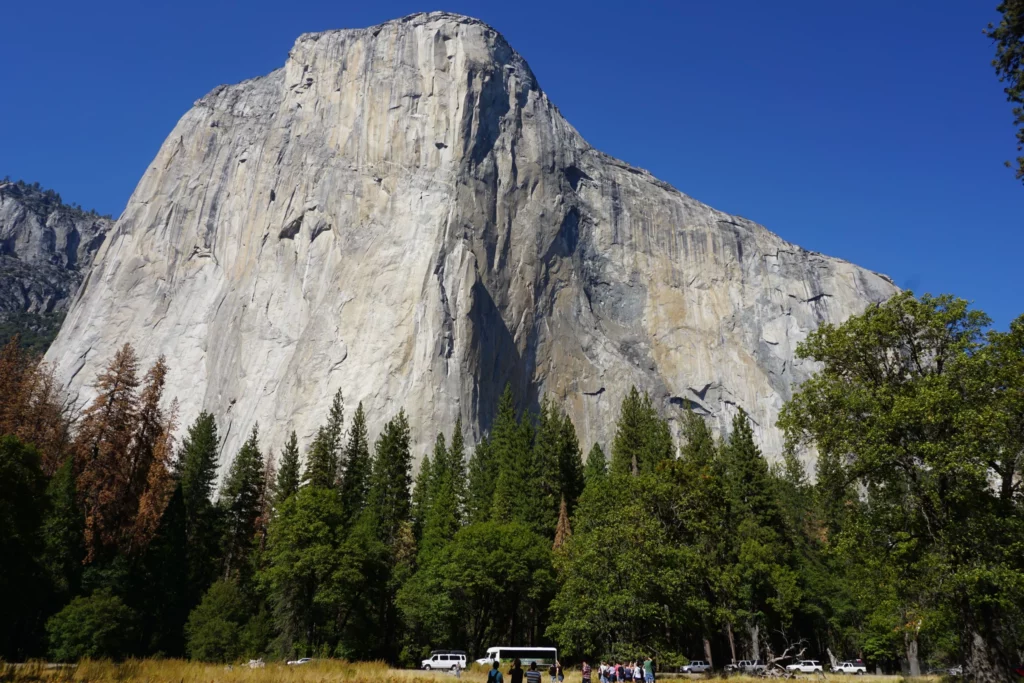
El Capitan is hard to miss: from the Tunnel View lookout, El Capitan is the massive cliff on the left side of Yosemite Valley. This 3,000-foot sheer rock face is legendary among climbers and those who admire their death-defying feats. Perhaps the most dramatic of these was Alex Honnold’s “free solo” climb on June 3rd, 2017 — unaided and without ropes. The climb took an astonishing three hours and 56 minutes.
To learn more about it, head over to the El Capitan Bridge and have a chat with one of the Yosemite Climbing Rangers. The “Ask a Climber” program is a daily gathering of rangers, climbers, and curious onlookers who can watch them scale the wall through telescopes.
Best view: El Capitan Meadow
Best tour to visit El Capitan: Yosemite and Giant Sequoias Tour from San Francisco
Glacier Point
Park veterans often debate the “best” view in Yosemite, and Glacier Point is always on the shortlist. From an elevation of 7,200 feet, visitors are treated to a grand view of the Sierra Nevada high country with the “tooth” of Half Dome featured prominently in the center.
Visit when the full moon is out for magical views and to celebrate the place where John Muir and U.S. President Teddy Roosevelt once camped. The road from Yosemite Village to Glacier Point takes about an hour by car, but is often closed beyond the Badger Pass Ski Area in winter.
Best tour to visit Glacier Point: Glacier Point Tour
Half Dome
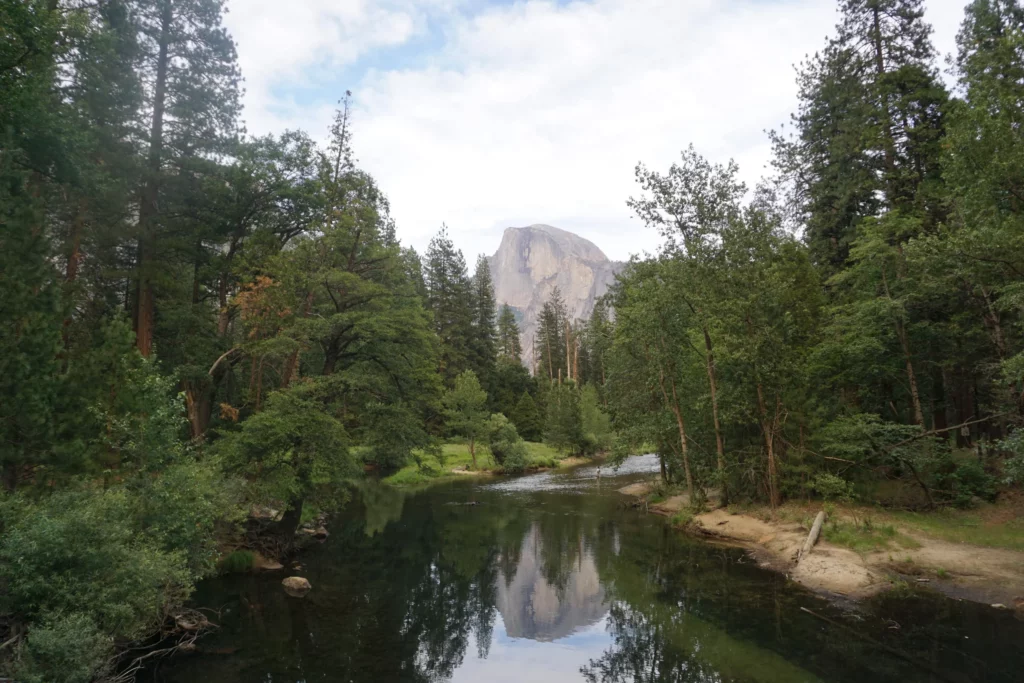
This granite formation at the eastern end of the Yosemite Valley is one of the most well-known rock formations in the park. Rising 4,737 feet from the floor of Yosemite Valley, its face gives the appearance of a large rock that’s been cut in half – hence the name Half Dome.
Nothing can prepare you for your first sight of Half Dome in person. You can see it clearly from Tunnel View, Glacier Point, and many other vantage points around Yosemite National Park. Get a sneak peek of the view from Yosemite Valley on the Half Dome live camera. Just know that if you plan to hike Half Dome during the summer, you’ll need to apply for a permit in advance.
Best view: Multiple locations in Yosemite Valley
Best tour to visit Half Dome: Yosemite and Giant Sequoias Tour from San Francisco
Horsetail Fall

Horsetail Fall is a relatively small waterfall that’s only visible at certain times of year. Photographers head there in mid- to late-February when the setting sun pierces the mist with reddish rays, making it appear as though the waterfall is on fire. This “Firefall” is such a rare phenomenon that we consider one of the top things to do in Yosemite in winter. To see Horsetail Fall for yourself, park at the El Capitan picnic area where you can see it from the road.
Best view: Yosemite Valley
Illilouette Fall
The best time to see Illilouette Falls is in May, when its flow is highest, but this 370-foot waterfall is viewable all year round. You can see the top of Illilouette Fall from Washburn Point on Glacier Point Road, but you’ll need to hike the Panorama Trail to see Illilouette Falls in all her glory.
Take the Panorama Trail toward Vernal Fall, which is a few miles from Glacier Point. You’ll get views of the back of Half Dome along the way. Illilouette Fall is hidden inside Illilouette Creek Canyon, just below Glacier Point.
Best view: Panorama Trail
Nevada Fall
Measuring 594 feet from top to bottom, Nevada Fall is a huge, curved granite water slide — with the entire Merced River going along for the ride. With its soaring mists at the western end of Little Yosemite Valley, it is one of the most beautiful waterfalls in Yosemite.
You can catch a distant view of Nevada Fall from Glacier Point, but if you want to take in its full grandeur, see it from the top! It’s a pretty steep climb up the Mist Trail from Vernal Fall, but the views are worth it.
Best view: Mist Trail
Olmstead Point
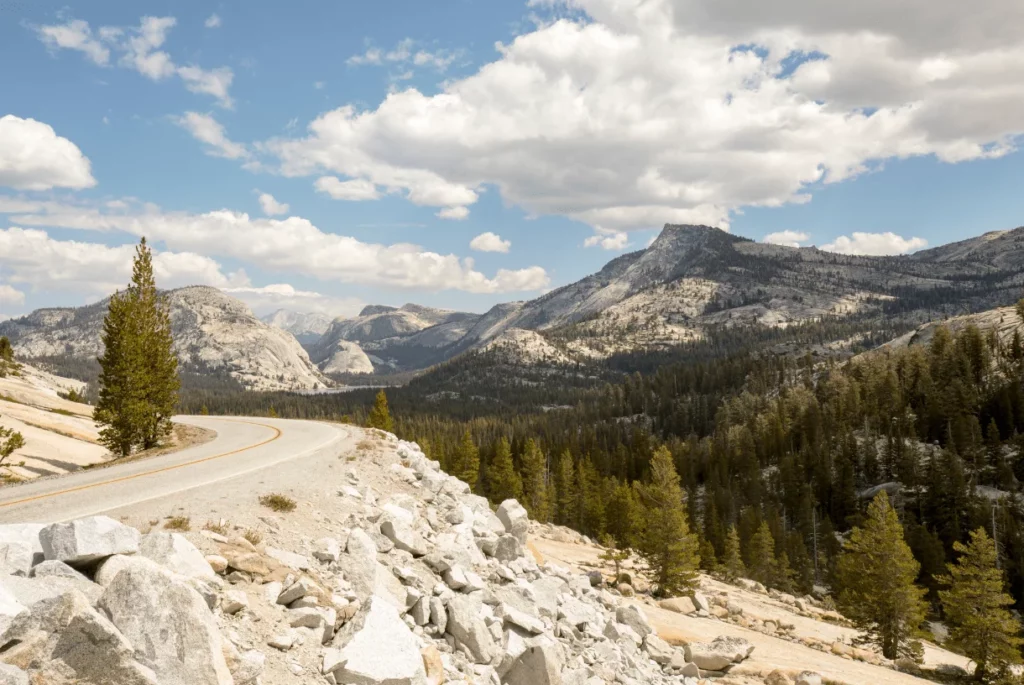
Olmstead Point offers a breathtaking perspective of Yosemite Valley from the north and is an excellent spot for taking selfies as you wander among erratic boulders left by retreating glaciers at the end of the last ice age.
The trip to Olmstead Point will bring you to a 48-mile stretch of Highway 120 that meanders through forests, meadows, lakes, and granite domes between Big Oak Flat Road and Tioga Pass. This high-country road is generally open between late May and October.
Best view: Tioga Pass
Ribbon Fall
This underappreciated waterfall is one of our favorite waterfalls in Yosemite. Ribbon Fall is the longest single-drop waterfall in North America and is only visible on the western side of El Capitan. The best time to visit this stunning 1,621-foot waterfall is in April or May, when water flow is at its peak.
You can get the best views of Ribbon Fall from the road into Yosemite Valley. Park in the roadside turnout just past the turn for Bridalveil Fall.
Best view: Road into Yosemite Valley
Sentinel Fall
Sentinel Falls is on the south side of Yosemite Valley, west of Sentinel Rock. Sentinel Falls is actually several cascades, ranging in height from 50 to 500 feet, which add up to a total drop of 2,000 feet.
You can see Sentinel Falls in early spring on Southside Drive, and from the Four Mile trailhead. Prefer a panoramic view? You’ll find one on the Upper Yosemite Falls Trail.
Best view: Southside Drive or Upper Yosemite Falls Trail
Tenaya Lake
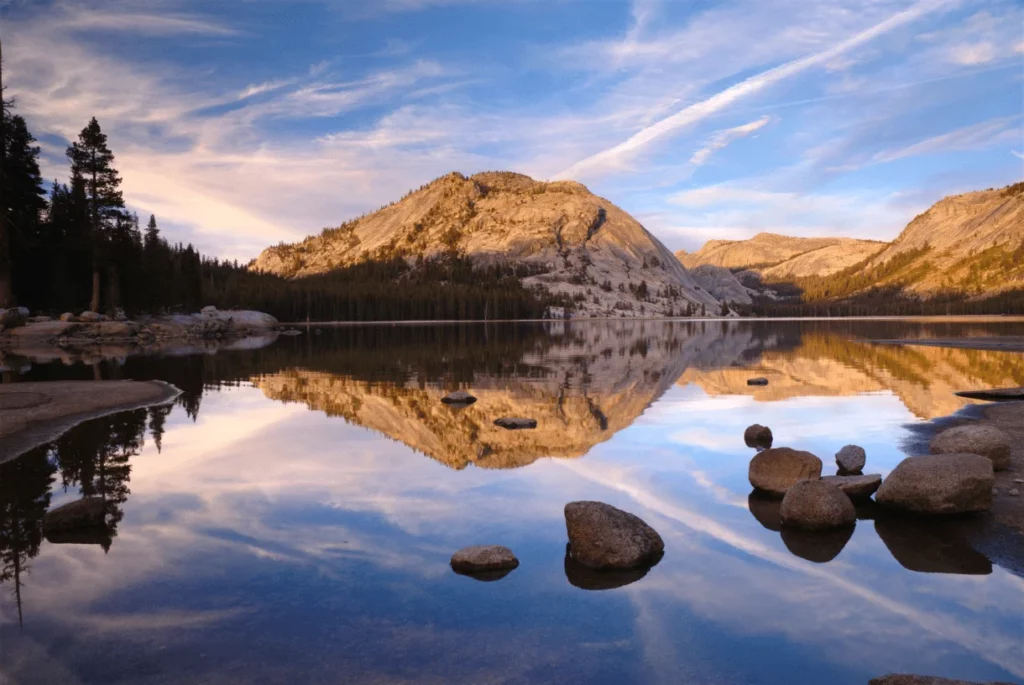
Tenaya Lake is a magnificent high Sierra lake surrounded by granite domes, lodgepole forests, and vast wilderness. The shores of the lake are popular for kayaking, boating, swimming, and even sunbathing. The panorama of Sierra Nevada peaks over the waters of Tenaya Lake makes for a classic photo.
You’ll find Tenaya Lake in the northern region of Yosemite Park, accessible on Highway 120 as it winds its way east toward Tioga Pass.
Best view: Tenaya Lake Picnic Area
Three Brothers
The Three Brothers — Eagle Peak, Middle Brother, Lower Brother — are rock formations in Yosemite National Park that rival Half Dome and El Capitan. John Muir considered the view from the top of Eagle Peak to be the most beautiful view of Yosemite Valley.
You can see the Three Brothers from the Cathedral Beach Picnic Area, but for the best perspective, hike to the top of Eagle Peak, or view them from the Valley Floor Loop or the Lower Yosemite Fall Trail.
Best view: Cathedral Beach Picnic Area
Tunnel View
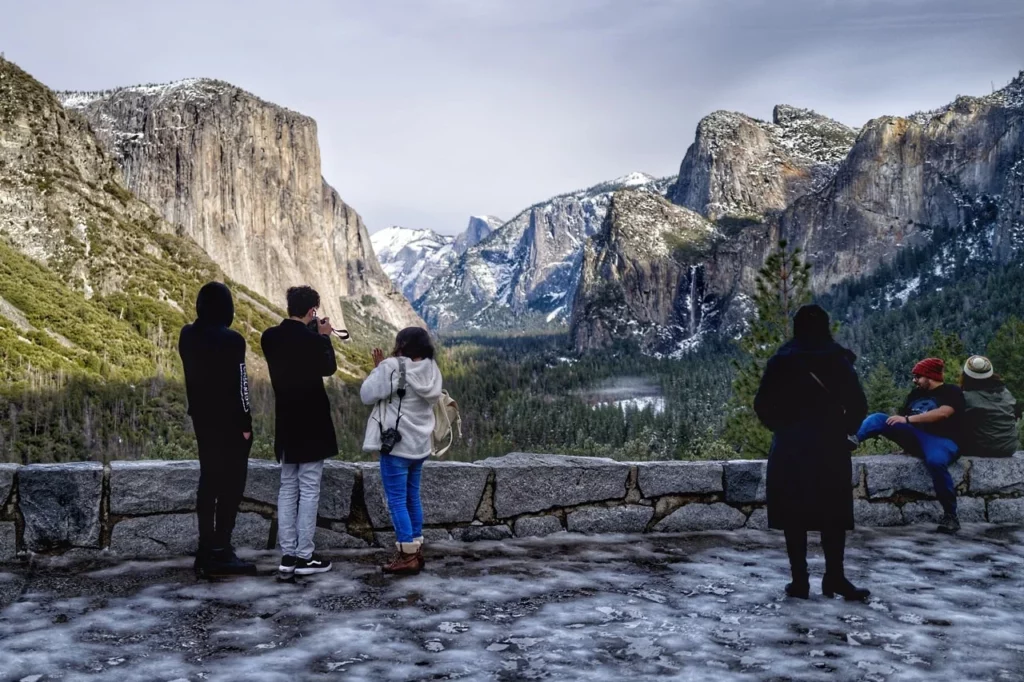
Tunnel View — made famous by Ansel Adams’ photographs — stretches out to the El Capitan formation on the left, Bridalveil Fall plunging off granite cliffs on the right, and all the way across the lush valley to Half Dome.
What you see changes with the season, but the best times to visit are in early spring when the falls are gushing, or in winter when the granite formations are draped in snow. Snap the best photographs in the afternoon when the walls are bathed in sunlight.
You can find the Tunnel View parking lot on the eastern side of the Wawona Tunnel on State Highway 41.
Best view: Tunnel View overlook
Tuolumne Meadows
One of the largest high-elevation meadows in the Sierra Nevada, Tuolumne Meadows has attracted early pioneers, present-day visitors, and scientists alike. The crystal-clear Tuolumne River meanders through a grassy channel, eventually cascading over a granite river bottom.
The Tuolumne Meadows Visitor Center has restrooms, a small gift shop, and a staffed information center. From there, you can take an easy hike to the spot where John Muir and Robert Underwood Johnson first conceived of the idea of establishing Yosemite National Park. Other popular activities in Tuolumne Meadows include hiking, rock climbing, backpacking, and fishing.
Best view: Tuolumne Meadows hike
Valley View
At Valley View, you’ll be right along the banks of the Merced River, and have a stunning view of El Capitan — which reaches 3,000 feet up to the sky — and the imposing spires of Cathedral Rocks across from it.
You’ll find this lovely photo spot as you leave Yosemite Valley near the South Entrance. Look for a roadside lookout point on the one-way Northside Drive right before you reach Pohono Bridge.
Best view: Valley View overlook
Best tour to visit Valley View: Yosemite Tour from San Francisco
Vernal Falls
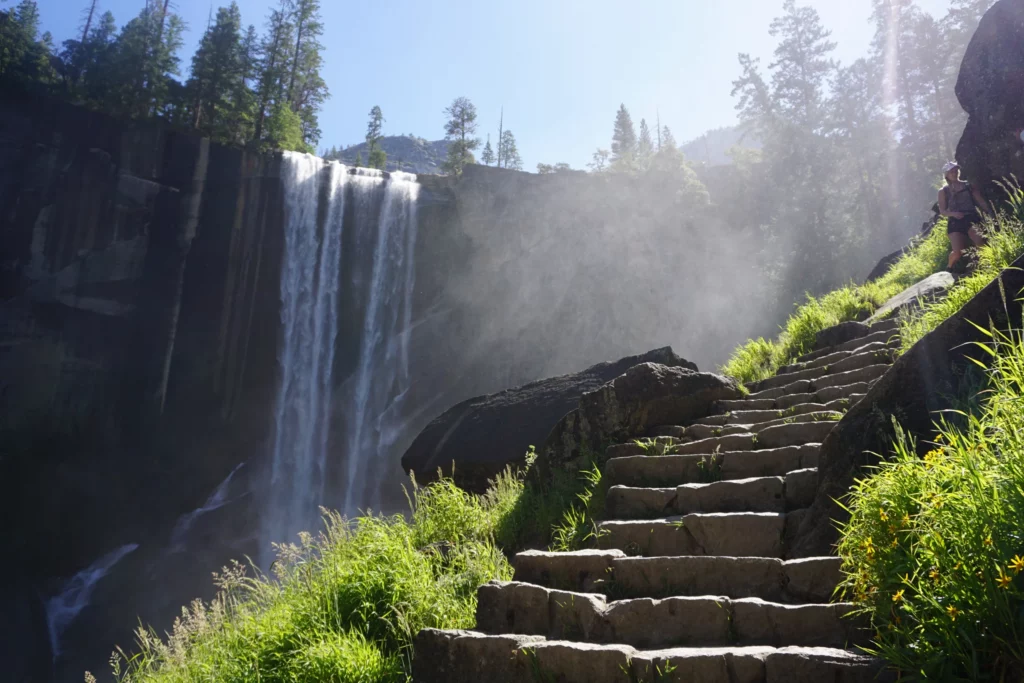
Vernal Fall makes for a dramatic photo because of its sheer ledge of rock, hemmed in by towering pines. Water cascades over the edge year-round, plummeting 317 feet down to an outcropping of granite boulders.
Unlike other popular falls in the park, Vernal can’t be seen from the valley floor by car. To feel the mist on your face, you’ll need to find the Vernal Fall trailhead near the Happy Isles Nature Center and follow it to the Vernal Fall footbridge, then on to the top. Be cautious in winter, as the trail can be wet or icy.
Best view: Mist Trail Hike
Wapama Falls
Wapama Falls is one of the most impressive waterfalls in Yosemite, but it’s often overlooked because of its location in the Hetch Hetchy Valley. During the spring snow melt, water plummets over 1,000 feet and spills across the trail at its base. The best spot for viewing Wapama Falls is from the parking lot at O’Shaughnessy Dam.
Yosemite Falls
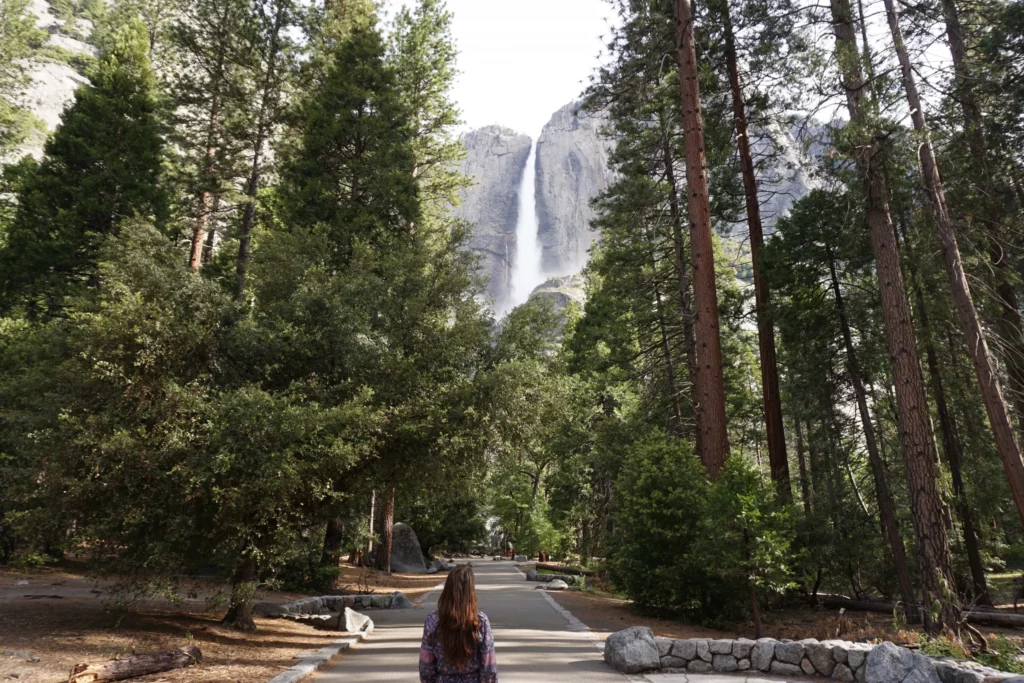
This Yosemite icon may look familiar because its springtime rainbows have been featured in countless books, calendars, and posters. However, Yosemite Falls is actually three separate falls — Upper Yosemite Fall, Middle Cascades, and Lower Yosemite Fall — stacked one on top of the other. When you add them up, you get 2,425 feet — nearly half a mile of falling water! That makes it the tallest waterfall in North America.
Since it relies on snowmelt, the best time to see Yosemite Falls itself is in the spring. Want to see if the waterfalls are gushing right now? You can on this live Yosemite Falls webcam.
Things to Do in Yosemite
Raft the Merced River

One way to enjoy Yosemite park’s major attractions in the summer is on a raft floating down the lazy Merced River. Lie on your back, trail your fingers in the water, and gaze up at Yosemite’s granite walls as they pass by.
You can rent a raft and safety equipment at Curry Village. At the end, a shuttle bus can take you back to the start.
Bike to Mirror Lake
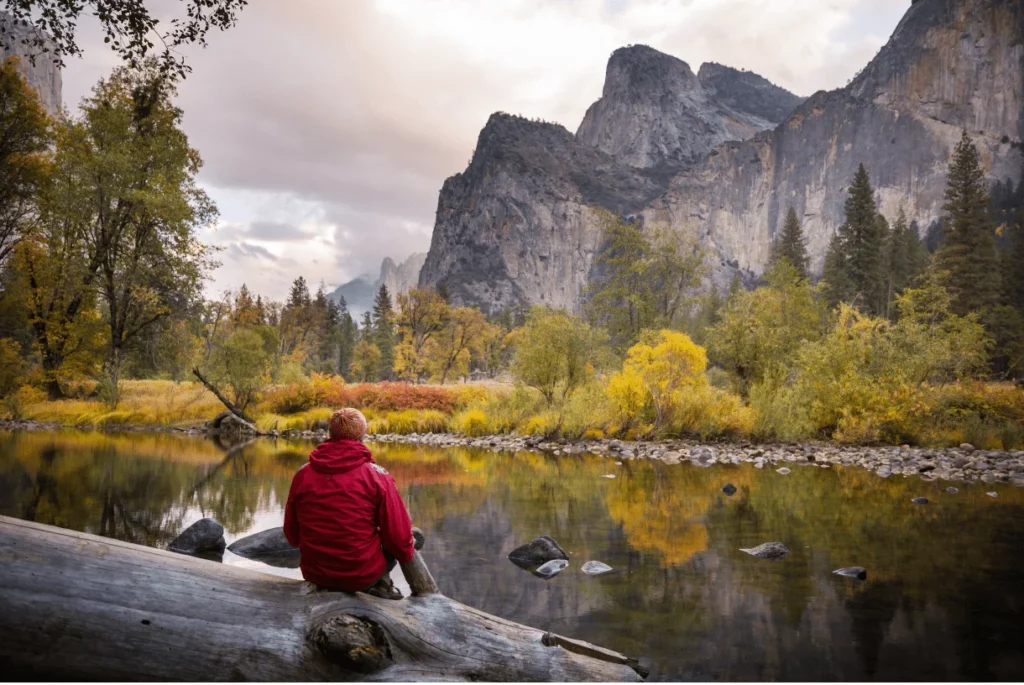
Mirror Lake offers stunning mirrored views of Tenaya Canyon, Mount Watkins, and a different perspective of Half Dome. The paved biking trail near shuttle stop #17 leads directly to Mirror Lake. You’ll need to walk the final short portion to the upper section of the lake.
The trail is open year-round, but the best time to visit is in early summer when the lake is filled by the flowing Tenaya Creek. This is a good place to spot wildlife, such as coyotes and bobcats. Bike rentals are available in Curry Village.
Hike the Mist Trail
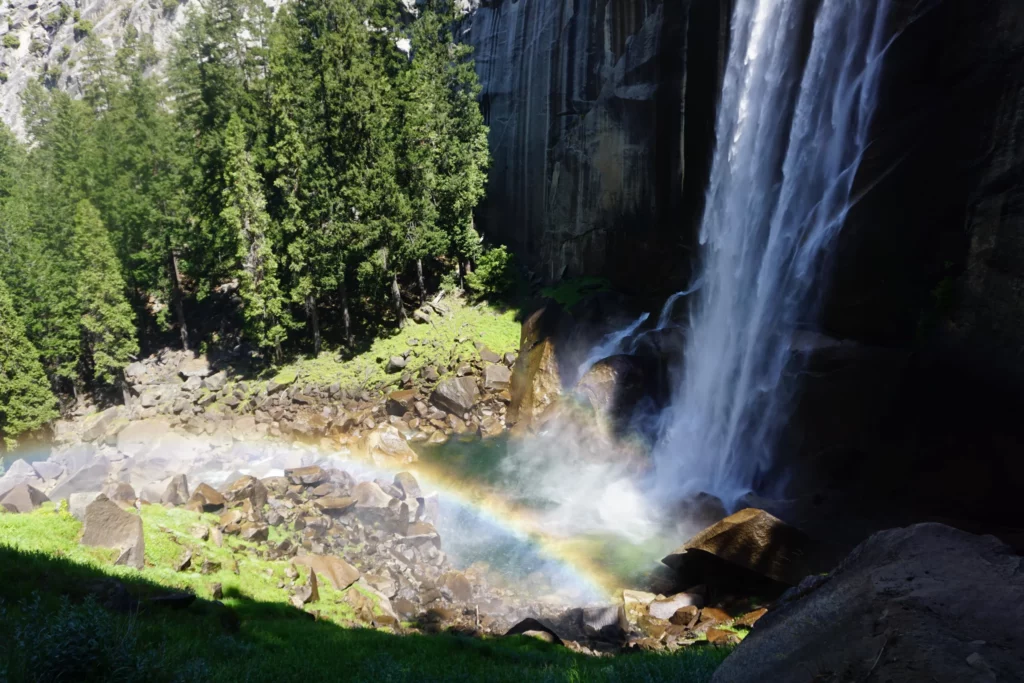
The Mist Trail hike has fabulous views at the bridge overlook, Nevada Fall, Liberty Cap, and the back of Half Dome. The 3-mile loop features a steep granite stairway of 600 steps that leads to the top of Vernal Fall. Be prepared for slippery footing due to the waterfall spray in the spring.
If you’re hiking during peak season, you’ll have the best experience starting early in the morning when crowds won’t be as much of an issue.
Gaze at the Stars
If you arrange a multi-day tour to Yosemite National Park, don’t limit yourself to daytime adventures. Yosemite — and national parks in general — are among the last great spaces without significant light pollution, offering wondrous views of the nighttime skies and the opportunity to gaze at the Milky Way.
Popular places for evening stargazing are at Bass Lake, Sentinel Dome, and Glacier Point.
Photograph from the Swinging Bridge
When you visit the Swinging Bridge Picnic Area, don’t be surprised when you arrive at a bridge that does not swing. Fifty years ago, this suspension bridge over the Merced River allowed adventure-seekers to rock the bridge.
The swinging bridge underwent several replacements due to spring floods that repeatedly damaged or washed the bridge away. This is still a beautiful place to gaze down into the Merced River’s crystal-clear waters and take pictures with Yosemite Falls and Sentinel Rock in the background.
For a bridge that actually swings, head to the Wawona Swinging Bridge near Chilnualna Falls instead!
Go Climb a Rock (or Boulder)
Many climbers have ascended Half Dome over the years, including George Anderson, who is credited with the first known summit in 1875. Want to try it yourself? A popular trail passes by Vernal Fall and Nevada Fall before reaching cabled handrails and steep granite steps up the backside of Half Dome. Permits to hike to the top of Half Dome are required and reservations are distributed via a lottery system here or by calling (877) 444-6777.
If you’re new to climbing, sign up for a class with Yosemite Mountaineering School and Guide Service in Curry Village. The beginners’ “Welcome to the Rock” class will have you climbing and rappelling on your first day.
Hike to the Tuolumne Grove of Giant Sequoias
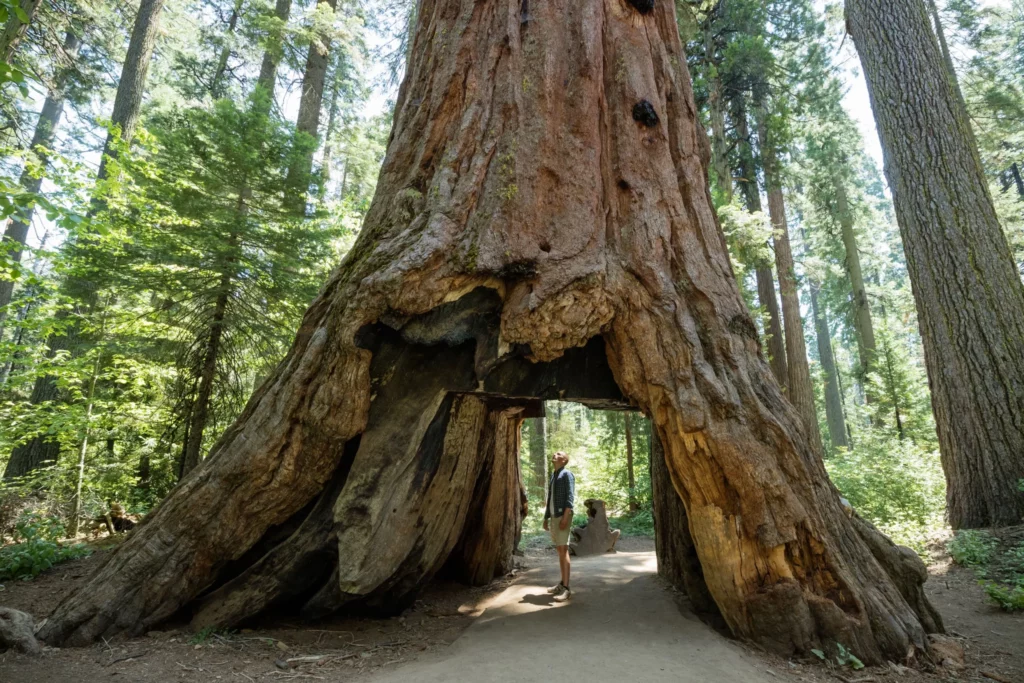
If you prefer an uncrowded hike to a stand of old-growth redwoods and a tunnel tree, this is your spot. Tuolumne Grove has about two dozen mature giant sequoias at the end of a one-mile hike. The one-mile hike back to the parking lot gains altitude and can be challenging for some; make sure you bring enough drinking water for everyone.
To visit Tuolumne Grove, start the hike at a small parking lot on Tioga Road just east of Crane Flat.
Lookout for Wildlife
If you get off the busiest trails or visit Yosemite National Park in the winter, you can expect to see a variety of wild animals. In fact, Yosemite is home to more than 400 species of mammals, birds, fish, reptiles, and amphibians.
The most coveted animal in Yosemite is the American Black Bear. Contrary to their name, most of the black bears in Yosemite have brown fur. Bears are rarely confrontational, but be sure to keep your distance, as they can become aggressive when interacting with cubs or when guarding food.
At higher elevations, you may get lucky and spot an endangered Sierra Nevada bighorn sheep. Bring your binoculars so you can see them from a distance! Other animals to look out for are mule deer, bobcat, and coyotes. Rangers strongly advise against feeding these wild park residents.
Suggested Itineraries for Yosemite
One of the biggest decisions you’ll need to make when planning your trip to Yosemite National Park is: How long should I stay?
The most common itineraries are either:
– a Yosemite day trip from San Francisco, or
– 2 days in Yosemite from San Francisco
Whether you make Yosemite a 1-day, 2-day, or more extended tour depends on the attractions and activities you want to do. Keep in mind that the park’s roads and trails are never point-to-point, so it can take hours to travel from one location to another. Luckily, there are a large number of awesome things to do concentrated in a small space on the valley floor.
As a starting point, we’ve put together the following itineraries, which you can modify to suit your perfect single or multi-day trip to Yosemite:
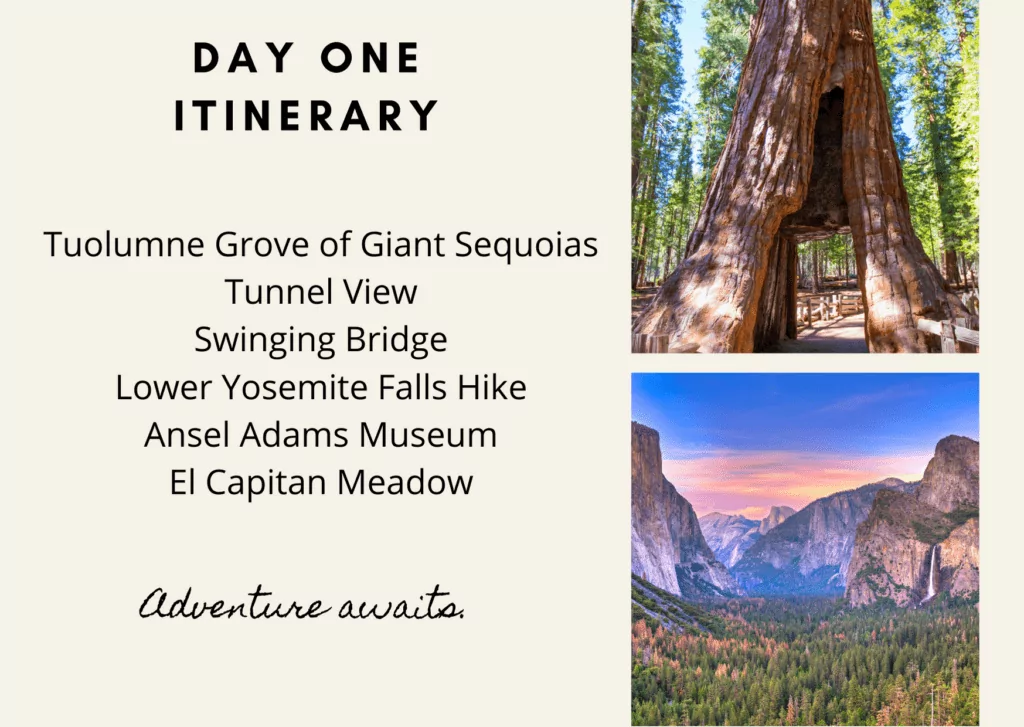

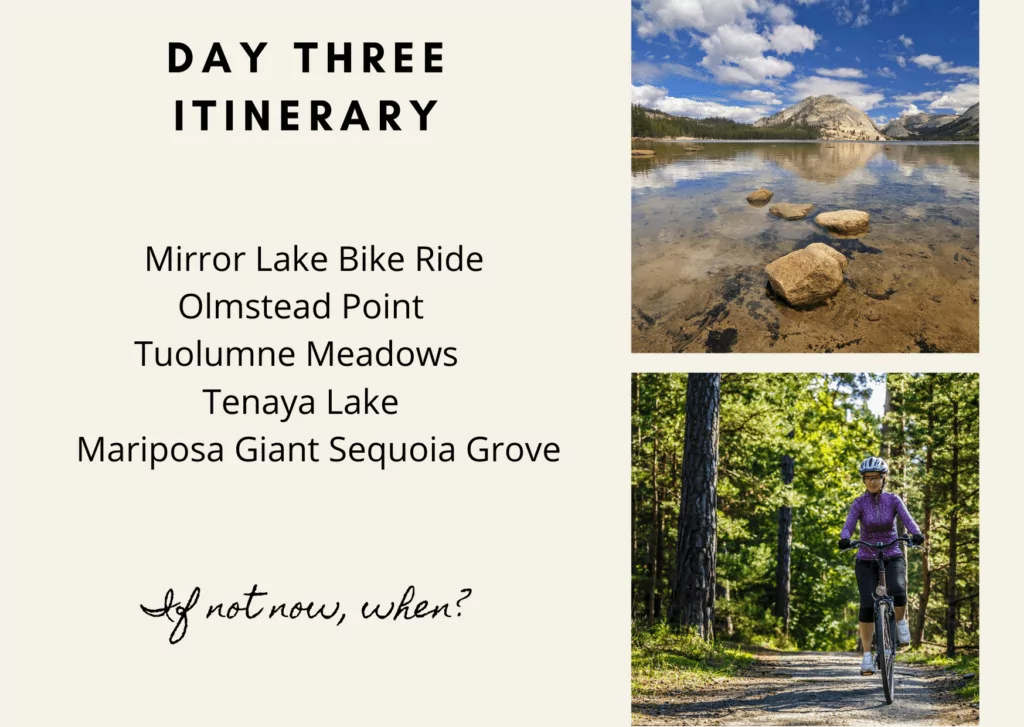
Best Time to Visit Yosemite National Park
Yosemite is gorgeous all year round, but in very different ways. In late spring and early summer, when melting snow from the Sierra Nevada thunders down into the valley, the waterfalls are especially spectacular.
During Yosemite winters, the park becomes less crowded and offers fantastic snowy landscapes, as well as opportunities for skating and skiing.
Here’s the deal: there’s no bad time to visit Yosemite. To help you out, we’ve summarized the activities you can expect to find in winter, spring, summer, and fall to help you plan the best time to visit Yosemite:
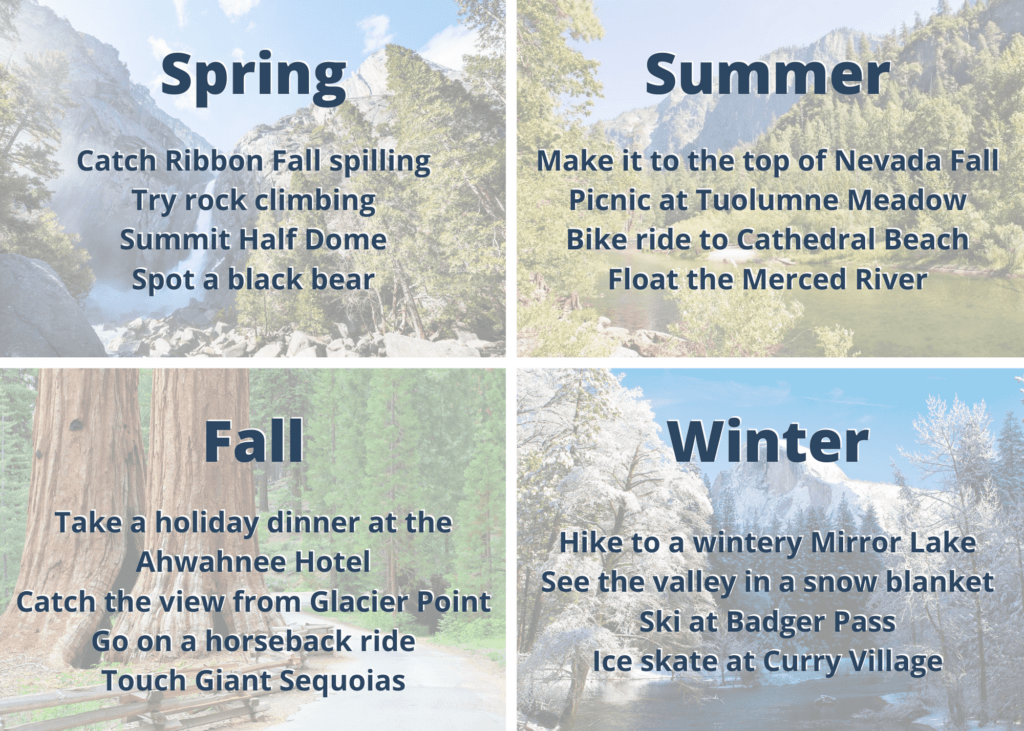
Where to Stay in Yosemite
If you’re planning far enough ahead, you may be able to nab lodging inside of the Yosemite park boundaries. Your accommodation options on the Yosemite Valley floor include everything from the historic Ahwahnee Hotel to the rustic tent cabins in Curry Village. There are also many luxurious to primitive lodging options in the surrounding cities of El Portal, Mariposa, and Groveland. Not to mention, getting from Groveland to Yosemite requires just a short bus ride. Check out a comparison of our favorite Yosemite lodging options.
Making Yosemite Park Reservation
In 2020, Yosemite began requiring reservations for personal vehicles entering the park during certain busy times of the year — for example, between 6 am and 2 pm on Labor Day Weekend. So, get your reservation first before investing a lot of energy into planning your trip, in case those dates aren’t available.
You’ll also need to pay an entrance fee to visit Yosemite National Park. As of 2025, the costs are $35 for a car, RV, or truck, $30 for a motorcycle, and $20 for a pedestrian. Fees are either paid at the entrance (cashless), or during the checkout process when you book a tour.
If you plan on making multiple trips to Yosemite, you can purchase an Annual Pass to the park for $70, or an annual pass to all National Parks for $80.
Getting Around in Yosemite Park
Getting around Yosemite National Park is easy thanks to the Yosemite Area Regional Transportation System (YARTS), a free public transportation system that allows you to explore the park car-free.
Four routes connect Yosemite to the gateway communities of Merced, Fresno, Mammoth Lakes, and Sonora (although the latter three operate only in the summer).
Don’t rely on rideshare apps like Uber or Lyft, as cell signal in Yosemite is unreliable. A car can be helpful in reaching destinations such as Glacier Point, Tuolumne Meadows, Badger Pass Ski Area, and other more distant points in Yosemite Park. Of course, the best transportation in the park is your own two legs!
Yosemite awaits!
There are many wonderful things to do in Yosemite National Park. Whether it’s your first or umpteenth visit, we’re excited for you and hope this post has been helpful to your planning. If you need additional assistance, we are here to help. See our Yosemite tours or contact us.
FAQs
What is the most beautiful park of Yosemite National Park?
Yosemite Valley is one of the most breathtaking parts of Yosemite National Park, offering stunning views of Half Dome and El Capitan. Another beautiful area is Tuolumne Meadows, especially in spring and summer when the wildflowers bloom.
What is the most beautiful park of Yosemite National Park?
One of the biggest attractions in Yosemite National Park is El Capitan — whether you admire it from afar or climb it. Other visitors prefer to see the Giant Sequoias in Mariposa Grove or Yosemite Falls, the highest waterfall in North America.
How many days in Yosemite is enough?
Spending 2-3 days in Yosemite is enough to see the most popular attractions. If you plan to go on strenuous hikes or spend time in multiple areas of the park, consider spending 4 or more days to allow for a more leisurely pace.
What is the best month to visit Yosemite?
The best month to visit Yosemite is May, when the roads are open but before the summer crowds arrive. The waterfalls will be flowing and the wildflowers will be in bloom. Another good month to visit Yosemite is September, after the summer crowds and heat have peaked.
Do you need a reservation for Yosemite National Park?
You don’t need a reservation to visit Yosemite, but reservations are required to drive into the park during peak hours, such as on Labor Day Weekend. You may also need a permit for some hikes, such as Half Dome or overnight hiking.
Gary Lillian is an advisor to Extranomical Tours which has led more than 10,000 guided tours in Northern California in the last 10 years. He is a graduate of Northwestern University, holds a master’s degree from Kellog Graduate School of Management, and is a recognized subject matter expert in marketing and customer experience engineering.
